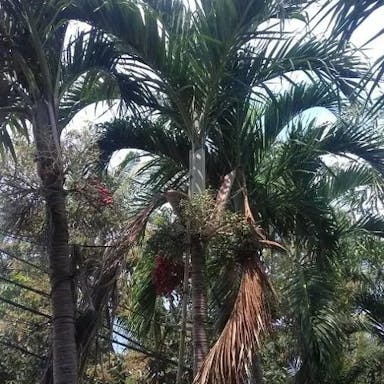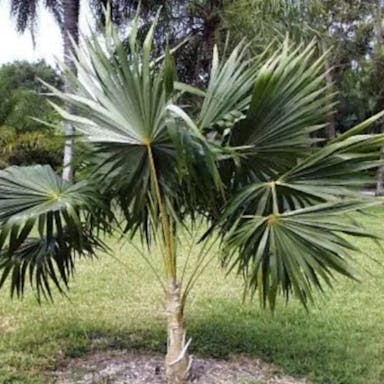Puerto Rican Thatch Palm, scientifically known as Coccothrinax barbadensis, is a plant species that belongs to the family Arecaceae. It is native to Puerto Rico and can be found in various habitats, including dry forests and coastal areas. This palm tree is characterized by its slender trunk, which can reach a height of up to 15 meters. The trunk is covered in a thatch-like material, giving it a unique appearance. The leaves of Coccothrinax barbadensis are palmate, meaning they are divided into multiple segments that radiate from a central point. These leaves can grow up to 1.5 meters in length and are a vibrant green color. The plant produces small, inconspicuous flowers that are typically white or cream-colored. These flowers are followed by small fruits that turn black when ripe. Coccothrinax barbadensis is a slow-growing palm tree that requires well-drained soil and full sun to thrive. It is relatively easy to grow and can tolerate drought conditions once established. This plant is often used in landscaping due to its attractive appearance and ability to withstand harsh environmental conditions. In summary, Coccothrinax barbadensis is a native plant of Puerto Rico characterized by its slender trunk, palmate leaves, small white flowers and black fruits. It is a slow-growing, drought tolerant palm suitable for landscaping projects.
0
0










